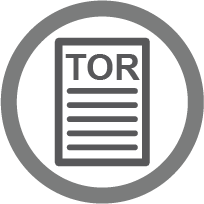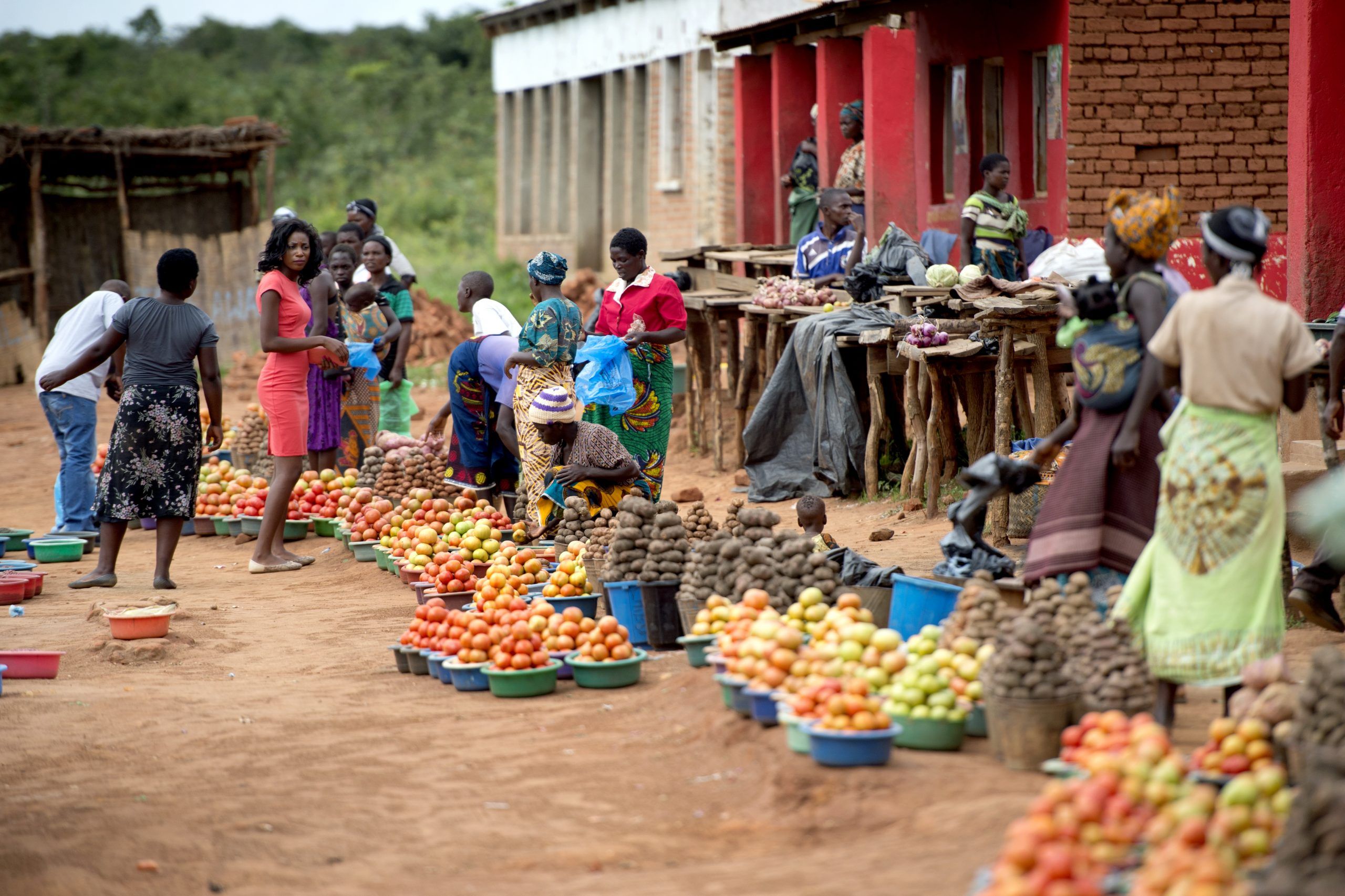1. Purchase Request with Terms of Reference

Identify the service(s) to be procured from the Procurement Plan and draft the TOR using SER 2-3: Terms of Reference.
Procurement starts with the completion and authorization of the Purchase Request Form GEN 1-1. The Purchase Request originates outside the Procurement Department and programme staff are usually in charge of drafting the TOR.
The Purchase Request identifies the TOR of the services, ensures sufficient budget and requests the procurement responsible staff to procure the services.
Clear, adequate and well-defined TOR is a prerequisite for receiving proposals matching the requirements and the budget. Please refer to section 4.12.2 when drafting the TOR.
Establish if the content of the TOR qualifies for the use of Open Budget and decide if the procedure will use Open Budget.
NOTE: If a candidate assists with input to the technical specifications, the candidate is excluded from participating in that procedure.
GEN 1-1: Purchase Request Form 


SUPPORT TEMPLATE
SER 2-3: Terms of Reference 


2. Draft Tender Dossier

Carefully prepare the Tender Dossier, applying SER 6. Please note that SER 6 is applicable to a one time purchase as well as a framework contract. Please follow the instructions in the document and customize the document to one or the other option. When preparing the Tender Dossier consider all the articles and options and decide on:
Deadline
Decide on the deadline for receipt of proposals. The bid flow shall be minimum 21 days.
Timetable for Tender Procedure
Tenderers shall be informed of the planned timetable for the further tender procedure, incl. clarifications, deadline, tender opening date, etc.
Organisation and Methodology
Consider if there is a need to include an Organisation and Methodology description in the Tender Dossier. This is often the case for complex service tasks which can be performed using different methodologies or if specific risks are related to the performance of the service, and there is a need to clarify how tenderers will deal with these risks.
Open Budget
Establish if the content of the TOR qualifies for the use of Open Budget and decide if the procedure will use Open Budget in SER 6-1: Tender Dossier for Open Budget.
Type of Remuneration
The Service Contract may be a ‘global price’ contract, a ‘fee-based’ contract or a mix of the two. One of the three options must be chosen in article A.6 Financial Proposal of the RFP and in article B.7 Remuneration of the Draft Contract.
For the global price the Contracting Authority pays the candidate according to the delivery of a defined output, e.g. reports, workshops etc. The global price includes all costs and is a total price. An advantage of the global price contract is the simplicity of its administration. The Contracting Authority having only to be satisfied with the outputs without monitoring the staff inputs or the reimbursable expenses. Studies are usually carried out on a global price basis e.g. surveys, master plans, economic, sector, simple feasibility and engineering studies.
In fee-based contracts remuneration is based on (i) agreed unit rates for the candidates’ staff multiplied by the actual time spent by the staff in executing the assignment, and (ii) reimbursable expenses using actual expenses and/or agreed unit prices. This type of contract is heavy on administration and requires the Contracting Authority to closely supervise and monitor the Contractor. ‘Fee-based’ contracts are used for assignments for which remuneration is being determined based on the time spent by the Contractor in carrying out the services. Such contracts are recommended when the scope of the services cannot be established with satisfactory precision, or the duration and quantity of services depend on variables that are beyond the control of the contractor.
Evaluation Criteria
Article A.11 of the RFP instructs the candidates of the technical and financial criteria, which the Procurement Committee will use for the evaluation of the proposals. Furthermore, it informs the candidates of the weights assigned to the technical and financial scores. Finally, the article details how the Procurement Committee will weigh the various technical criteria.
For the technical evaluation criteria, defined in the table in article A.11, it is important to note that these are suggested criteria and it is the responsibility of the Procurement Committee to modify these to match the requirements of the contract in question. To assist the evaluation process, please define unambiguous and measurable evaluation criteria. The technical score is the sum of the points each candidate has obtained for each technical criterion. The Contracting Authority has the right to discard technical offers scoring below a certain number of points. This is to safeguard the procedure against low quality offers.
Examples of technical evaluation criteria could be the candidate’s experience in the field of assignment, the candidate’s general academic qualifications and specific experience in the region/country of the assignment, the adequacy of the proposed methodology and the work plan in responding to the TOR, the candidate’s availability and the required time to perform the services, CSR related policies and certifications etc.
The financial evaluation criteria are predefined in article A.11 as the formula Sf = 100 x Fm/F (Sf is the financial score of a proposal; Fm is the lowest price; and F is the price of the proposal under evaluation). This formula cannot be changed. During the evaluation in Step 4, the Procurement Committee applies this formula to calculate a financial score for each proposal received.
Please note that the overall score links directly to the award criteria in article A.12 of the RFP.
Donor Requirements
Take notice of specific donor requirements such as requirements to origin and nationality, exclusivity clauses, publication rights, visibility, right to audit, exclusion and eligibility clauses, preference criteria, etc., which might require amendment of the RFP.
Ethical Criteria
It is recommended to collect general information on sector and country specific ethical risks to identify potential risks related to procuring the service in question. Is there a need to include specific criteria to ethical procurement issues in the RFP such as certifications (or equivalent proof of compliance to ethical criteria) or the inclusion of specific terms related to e.g. environmental or social performance?
Bank Guarantees
Will a prepayment or performance guarantee be required? For more information on bank guarantees, see section 9.3.
Special Conditions
Make sure to include all the special conditions for the specific contract in the Draft Contract. The Tender Dossier in SER 6 provides the basic information and phrases but each contract shall be adapted to the specific requirements of the project, the service required and contractual context.
SER 6: Tender Dossier incl. Framework Contract 

SER 6-1: Tender Dossier for Open Budget 

3. Publish Tender Notice

Draft the Tender Notice applying GEN 11. The Tender Notice shall as a minimum describe the service to be procured (incl. the essential TOR), the rules governing the submission and presentation of tenders, the exclusion, selection and award criteria, and where and when the Tender Dossier can be collected.
Interested tenderers shall be given a minimum of 21 days to submit a tender from the date of publishing the Tender Notice until deadline. The bid flow of 21 days may be longer depending on the nature of the service.
The Tender Notice shall be published in the country of operation in suitable media e.g. newspapers, websites as well as media required by donor. To provide eligible candidates in the country of operation with equal business opportunities, the Procurement Committee is encouraged to submit the Tender Notice directly to a broad list of candidates who could be interested in participating in the tender process.
It is in the interest of the Procurement Committee to ensure the widest possible participation in the Tender to obtain the best quality and value for money.
NOTE: The Tender Dossier shall be available on the date of publishing the Tender Notice.
GEN 11: Tender Notice 

4. Submit Tender Dossier

Within 1-2 days of the Tender Dossier being requested it shall be submitted to interested suppliers. At this stage it is also important to communicate the ethical principles and standards to the suppliers.
Use GEN 13 to keep a record of the date the Tender Dossier was submitted and to whom. Identify each tenderer by a number.
Should the Contracting Authority require an amendment to the Tender specifications or TOR, please also use GEN 14 to communicate to all tenderers interested in participating in the tender procedure. Tenderers may submit questions and clarifications in writing according to date specified in the time table A.4 in the Tender Dossier. Information regarding interpretation of the Tender Dossier shall be requested in writing only. Tenderers are not allowed to approach the Contracting Authority for oral clarification. Clarifications to the Tender Dossier shall be documented in GEN 14 and shared with all tenderers interested in participating in the tender procedure.
Any prospective tenderer seeking to arrange individual meetings during the tender period with either the Contracting Authority or any other organisation with which the Contracting Authority is associated or linked to, shall be excluded from the tender procedure.
NOTE: Tenderers shall never pay for costs in relation to the tender process and it is not acceptable procurement practice to sell the Tender Dossiers against a `tender document fee ́.
GEN 13: Shortlist of Suppliers/Candidates and Receipt Form 


GEN 14: Tender Amendments, Questions and Answers 

5. Receive Tenders

For each tender received, the date and time of receipt shall be registered in GEN 13, including name of the person who received the tender. All received tenders shall be kept unopened in a secure place until the tender opening session.
All tenders received after the deadline shall be rejected at the tender opening. If the deadline is 17:00 hrs, then offers received at 17:01 or later shall be rejected.
GEN 13: Shortlist of Suppliers/Candidates and Receipt Form 


6. Conduct Tender Opening Session

Conduct a tender opening session where all tenderers who has submitted a tender are invited to participate. Tenders shall be opened at the announced time, place and date in the presence of tenderers who choose to attend. The names of the tenderers and prices are read aloud and registered in GEN 15-3, and tenderers who participate are registered in GEN 15-2.
For guidance on how to prepare and conduct the tender opening session please refer to GEN 15-1: Tender Opening Checklist.
GEN 15-2: List of Participants 

GEN 15-3: Tender Opening 


SUPPORT TEMPLATE:
GEN 15-1: Tender Opening Checklist 

7. Ensure Administrative Compliance

After the tender opening the Procurement Committee shall carry out administrative compliance check of the received tenders. Fill in section A of SUP 5: Evaluation Grid for Open Tender. This is a preliminary examination of all tenders and not an evaluation of the actual proposals.
Each tender shall be checked for administrative compliance based on the requirements set out in the Tender Dossier e.g.
• Was the tender received before the deadline?
• Are the required no. of copies supplied?
• Is the Tender Submission Form completed and duly signed?
• Are requirements to origin and nationality respected (if required)?
• Are all the requested documents submitted and properly signed e.g. certification, references, bank guarantees, the Tender Submission Form etc. The required documents are listed under “instructions to tenderers” in the Tender Dossier.
Tenders which do not comply shall be rejected and the reason for rejection shall be stated in section A of SUP 5.
SER 7: Evaluation Grid for Open Tender 
8. Evaluate and Select Tenderer

After ensuring administrative compliance, each member of the Procurement Committee shall receive a copy of the compliant tenders for evaluation and analysis. This evaluation shall be done in private and each member shall fill in part B and C of the Evaluation Grid in SER 7. Tenderers are not allowed to be present. Make sure all the evaluation criteria, defined in the Tender Dossier are applied to the Evaluation Grid before evaluation starts.
After the individual evaluations the Procurement Committee meets and discusses their individual evaluations, drafts a joint Evaluation Grid (SER 7), ranks proposals and selects the winning tenderer. The joint Evaluation Grid shall clearly document why the winning proposal was selected and shall be signed by all members of the Procurement Committee. Tenderers cannot attend this meeting.
Before issuing the Contract, please verify the selected candidate’s eligibility as per DCA Counter Terrorism Policy, by checking the UN Security Council, EU and donor required sanctions lists.
Clarifications
During the evaluation it may be necessary to obtain clarification from a tenderer. Depending on the type and complexity of the clarification, the tenderer can be invited for an interview or be asked to provide clarifications by email. For email communication, please allow the tenderer sufficient time and do stipulate a deadline.
If the clarifications are best obtained through an interview, the Procurement Committee has the possibility to change the scores in the Evaluation Grid. There is a separate column in the Evaluation Grid for this purpose.
Evaluation Challenges
• If there is a need to amend the technical specifications described in the Tender Dossier, either by reducing or increasing the minimum requirements, the tender process shall be cancelled and a new procedure initiated, starting from step 1. The deadline for submitting tenders can be reduced from 21 to 15 days or less, depending on the complexity. This emphasises the importance of drafting a clear TOR and evaluation criteria from the outset of the procurement process.
• If all financial offers exceed the budget substantially, the cause for this can either be change in the market price, minimum technical requirements are too high, etc. The reason for the high offers shall be clarified. Proceed as described in the above case scenario if changes to the technical specifications are needed.
• If less than three tenders have been received, it is acceptable to proceed with the best tender provided that general procurement principles are met, incl. proper advertisement. If there is a need to make substantial changes to the contract terms e.g. TOR, the tender process shall be cancelled and a new process initiated, starting from step 1. If no tenders are received a new tender procedure shall also be initiated. Please analyse the possible reason for the lack of tenders and implement the findings in the new Tender Notice and the Tender Dossier.
SER 7: Evaluation Grid for Open Tender 
9. Issue Contract and Send Letter of Acceptance

The Procurement Committee sends a Letter of Acceptance to the selected tenderer, applying GEN 16, and issues the contract applying the template in the Tender Dossier (part B of SUP 3). Check if the standard contract must be adapted to national legislation, traditions or requirements. Incorporate all agreements reached with the selected supplier in the contract and never delete or make alterations to the GTC.
The contract shall be forwarded unsigned to the selected tenderer and returned signed to the Contracting Authority. Only thereafter shall the contract be signed by the Contracting Authority. Signing the contract creates a legally binding document for both parties.
Before signing the Contract the Procurement Committee shall ensure:
• That adequate and exact references are made in the contract to the tender
• That the tenderer acknowledges the GTC and the COC without exceptions or amendments
• For new suppliers, make sure that satisfactory references and company data have been collected
NOTE: If the selected tenderer cannot accept the GTC the Procurement Committee shall decline the bid and continue the process with another tenderer.
SER 6: Tender Dossier (incl. Contract) 

GEN 16: Letter of Acceptance 

10. Send Letter to Unsuccessful Tenderers

After the contract has been signed, the Procurement Committee shall submit a notification letter to the unsuccessful tenderers notifying them of the result of the tender process. Use the template in SER 5.
SER 5: Letter to unsuccessful Candidates 



11. Publish Award Notice

It is mandatory to publish an Award Notice, applying GEN 17. The Award Notice shall be published in a suitable media where suppliers will notice the information and on the Contracting Authority’s website. The purpose of a public announcement is to meet the principle of transparency with the added benefit of attracting new suppliers. Thus, the Award Notice is useful and recommended for all contracts.
For situations where the Procurement Committee finds that posting an Award Notice will bring project staff, beneficiaries, the project or the winning contractor at risk, the Procurement Committee may refrain from posting an Award Notice, see blanket derogation (k). This shall be duly documented.
NOTE: The Procurement Committee shall take notice of any specific donor requirements for publishing an Award Notice.
GEN 17: Award Notice 

12. Receive and Inspect

Ensure that the services completed, inspected and received comply with the contract. Issue a Completion Certificate or file other relevant documentation as proof of receipt of the services e.g. a report or adapt SUP 13 to the needs. The Contracting Authority shall follow up on the timely delivery and satisfactory quality of the received services.
SUP 13: Goods Received Note 


DOCUMENTATION IN THE PROCUREMENT FILE
• Declaration of Impartiality and Confidentiality
• Purchase Request
• Tender Dossier
• Tender Notice
• Shortlist of Suppliers/Candidates and Receipt Form
• Tenders received
• Amendments, Questions and Answers
• Tender Opening Minutes (Checklist, List of Participants, Tender Opening)
• Evaluation Grid for Open Tender
• Contract and Letter of Acceptance
• Letter to Unsuccessful Candidates
• Copy of Invoice
• Award Notice
• Proof of receipt of the service(s)
• Note to File, if relevant

